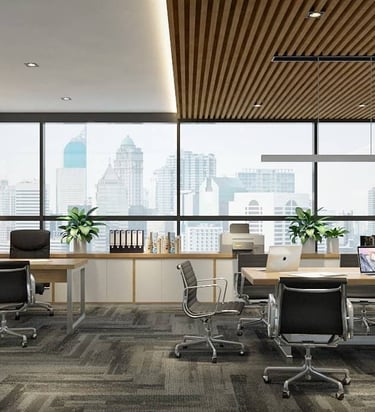Commercial Interior
Designing a commercial interior involves creating a functional and visually appealing space tailored to the needs of a business or organization. Whether it's an office, retail store, restaurant, or any other commercial establishment, several key factors need consideration:
Functionality: The interior design should support the primary functions of the space. For example, an office layout should facilitate productivity and collaboration, while a retail store layout should encourage sales and customer flow.
Branding: The design should reflect the brand identity and values of the business. This includes the use of colors, logos, and visual elements that align with the brand image.
Customer Experience: For retail and hospitality spaces, creating a positive customer experience is crucial. This involves considerations such as layout, lighting, seating, and signage to enhance comfort and convenience.
Aesthetics: The design should be visually appealing and on-trend while also standing the test of time. This might involve selecting appropriate furniture, finishes, and decor that complement the overall theme and style.
Accessibility: Ensuring that the space is accessible to all individuals, including those with disabilities, is essential. This includes considerations such as wheelchair access, clear pathways, and accessible restrooms.
Sustainability: Incorporating environmentally friendly design elements, materials, and practices can enhance the sustainability of the space and align with the values of both the business and its customers.
Regulations and Codes: Compliance with building codes, safety regulations, and zoning requirements is essential to avoid legal issues and ensure the safety of occupants.
Flexibility: Designing the space with flexibility in mind allows for future adaptations and changes as the needs of the business evolve over time.


